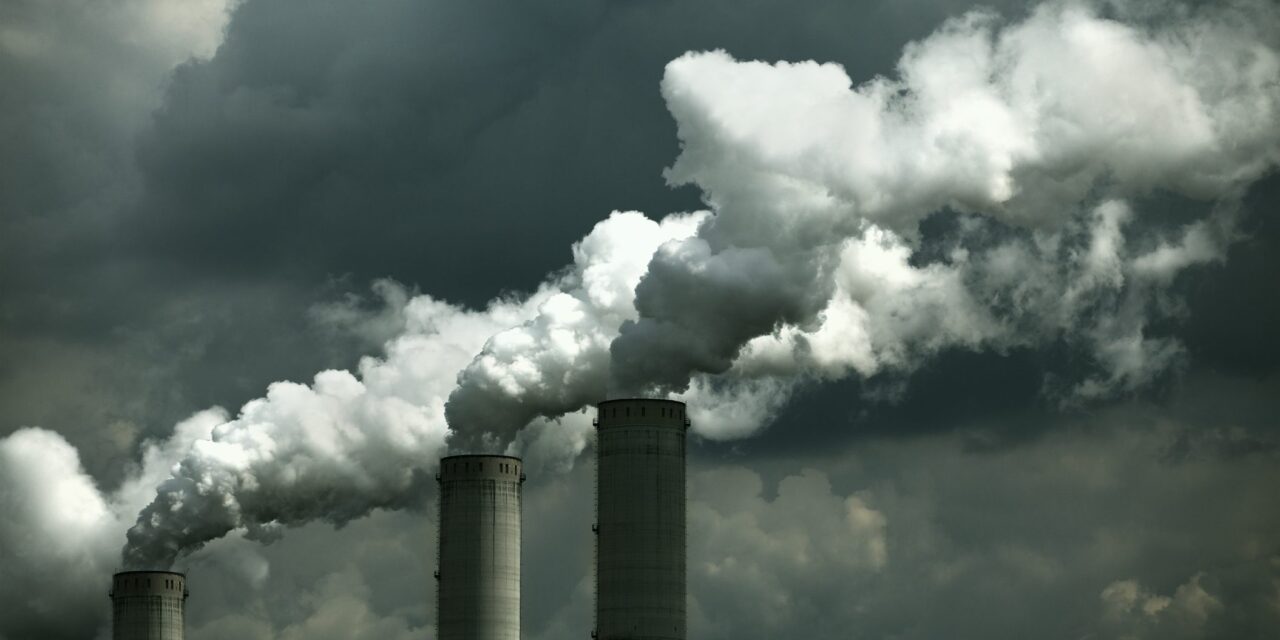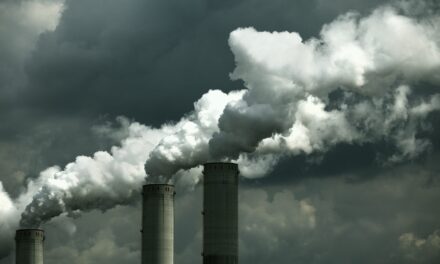Read this small paragraph, please:
Sections of the Rio Grande, Yellow, Colorado and Tigris rivers are now drying out each summer.
Now read this one:
[Rick Perry rejects] the science of climate change while his own state is on fire — after the worst droughts on record have propelled wildfires to devour an area the size of Connecticut. As a statement by the Texas Forest Service said last week: “No one on the face of this earth has ever fought fires in these extreme conditions.”
There is too little water in many parts of the world due to extreme droughts. That’s a fact. The flip side is that there is too much water is other parts of the world. Just ask the Pakistanis — again.
BADIN, Pakistan — Stranded by floodwaters, army soldier Mohammed Hameed was unable to get to the graveyard to bury his 5-year-old daughter when she succumbed to diarrhea. He laid her to rest in his courtyard – one of the latest victims of floods that have returned to Pakistan this year, leaving some 200,000 homeless and triggering another international aid effort.
The scale of the disaster and the aid response is much less than last year, but the misery for those effected is just as real. The floods began early last month, but heavy rains have compounded them recently and hampered relief efforts.
On Tuesday, thousands of men, women and children lined the main road in Badin, the worst hit district around 200 kilometers from Karachi, the country’s largest city. Some were sitting under plastic sheets held up by the branches of trees.
Or on case you forgot, the flooding along the Mississippi in the Midwest and South this Spring in the United States:
The Mississippi River floods in April and May 2011 were among the largest and most damaging recorded along the U.S. waterway in the past century, comparable in extent to the major floods of 1927 and 1993. In April 2011, two major storm systems deposited record levels of rainfall on the Mississippi River watershed. When that additional water combined with the springtime snowmelt, the river and many of its tributaries began to swell to record levels by the beginning of May. Areas along the Mississippi itself experiencing flooding include Illinois, Missouri, Kentucky, Tennessee, Arkansas, Mississippi, and Louisiana. U.S. President Barack Obama declared the western counties of Kentucky, Tennessee, and Mississippi federal disaster areas
And the flooding along the Missouri river, let’s not forget that either.
The 2011 Missouri River floods are a flooding event on the Missouri River in the United States. The flooding has been triggered by record snowfall in the Rocky Mountains of Montana and Wyoming along with near record spring rainfall in central and eastern Montana. All six major dams along the Missouri River are releasing record amounts of water to prevent overflow which has led to flooding threatening several towns and cities along the river from Montana to Missouri; in particular Bismarck, North Dakota; Pierre, South Dakota; Dakota Dunes, South Dakota; South Sioux City, Nebraska, Sioux City, Iowa; Omaha, Nebraska; Kansas City, Missouri; Jefferson City, Missouri, as well as putting countless smaller towns at risk. According to the National Weather Service, in the second half of the month of May 2011, almost a year’s worth of rain fell over the upper Missouri River basin.
So, in many places we have too little water, and in others way, way too much. I’m not even going to go into the details of the flooding in Australia this last winter — just click on this link for the information — or the major drought in the Horn of Africa that is threatening the lives of millions of people with famine as I type. Oh and there’s a severe drought in China as well, the worst in 60 years, that will have major impacts on the world’s economy and food supplies, just as the heat wave and wildfires had an impact on Russia’s grain production last year.
Scarcity of water is bad news for those living in drought stricken areas, as consumers, agricultural producers and oil and gas companies all compete for this scarce resource.
In drought-stricken Texas, water shortages are impacting its burgeoning hydrofracking industry. Cities across northern Texas, grappling with water shortages, are limiting water provided to hydrofracking operations. […]
Water utilities and regulators have put restrictions on residential, commercial, and agricultural water use, and now they are turning to hydrofracking operations. But the drought has laid bare the fatal flaw in current Texas water law: though the state enacted regulations requiring operators to disclose the chemical contents of fracking fluids, operators utilizing wells for extraction are exempt from reporting how much water they use.
The result: regulators have no idea how much and where the water is being used. It was reported here that in one Texas county nearly 90% of groundwater use is exempt from reporting requirements. In short, Texas has made strides to protect water quality, not water quantity, which may be the most critical issue the long run: a recent report indicates that the industry currently uses 12b gallons of water per year and it is expected to climb to 39b by 2030.
But too much water is just as bad a problem. Both droughts and flooding, combined with severe storms, have impacted agricultural production in the United States this year. What’s more disturbing is the fact that extreme weather conditions are expected to persist, affecting agricultural production for at least the next decade around the world:
Extreme weather conditions aren’t just threatening U.S. agriculture, but are expected to affect global food output over the next decade.
“Extreme events will become more intense in the future, especially the heat waves and extreme precipitations,” Omar Baddour, a division chief at the United Nations’ World Meteorological Organization, told Bloomberg News. “That, combined with less rainfall in some regions like the Mediterranean region and China, will affect crop production and agriculture.”
China is set to see harsher droughts after experiencing some of the lowest rainfalls in 50 years this season. China’s drought has affected 6.5 million hectares (16.1 million acres) of farmland, according to the Office of State Flood Control and Drought Relief Headquarters.
The dry weather threatens to limit the country’s rice production.
Weather disasters have cost the US economy billions of dollars this year, and the main culprit is the excess water that is contained the atmosphere as the result of global warming:
“A warmer atmosphere has more energy to power storms. We’ve loaded the dice,” said Jeff Masters, co-founder and director of meteorology for Weather Underground, Inc, speaking on Wednesday at a news conference on climate. “Years like 2011 may become the new normal in the United States in coming decades.” […]
Other years have been more expensive overall due to single events, such as Hurricane Katrina in 2005. But 2011 has already moved into the top 25 percent of the costliest years, and the hurricane season isn’t half over, Vaccaro said. […]
Republican presidential front-runner Rick Perry said last month he does not believe in man-made global warming, calling it a scientific theory that had not been proven. Other political conservatives have questioned evidence of man-made climate change and government plans that could slow it.
Katharine Hayhoe, an atmospheric scientist at Texas Tech University, said policy is not black and white, and there has to be debate over policies to address climate change.
But policy opinions are one thing and scientific facts another, she said, adding that she is troubled to see more of the general public doubting climate change even as more scientific evidence piles up to support it.
“The evidence is what the planet is telling us,” Hayhoe said. “These are not political opinions.”
Reasonable Republicans agree that climate change is a reality and that it is time to stop playing politics with the facts, but the Republican party is in the hands of unreasonable, irrational people who dislike science, in general, and climate science in particular. With the rare exception of Jon Huntsman, the Republican Presidential field is anti-science and opposes policies to ameliorate the effects of climate change, either because they are true believers or they are frightened of the Republican base, the very voters they need to win over to obtain the nomination. Indeed, Republicans in Congress are determined to eviscerate federal sponsored climate funding as much as possible and they may win the day thanks to the debt ceiling “compromise” deal:
What follows is an outline of how the deal and budget negotiations could affect climate assistance and CAP’s proposals for appropriate U.S. funding going forward. […]
Along with a $400 billion debt ceiling increase, $1 trillion in cuts over 10 years was tagged onto the agreement. The deal relied on huge cuts to discretionary spending, leaving revenues and entitlements largely untouched, including no new taxes on the wealthy and protecting oil subsidies. […]
Guess what discretionary spending the republicans will point to as unnecessary> Anything climate related. Meanwhile, as our earth’s atmosphere and oceans continue to heat up, water scarcity, and extreme storms caused by increased water in a warmer atmosphere will continue to alter the world’s climate, and make matters worse for the rest of us. You think the weather is weird now? You ain’t seen nothin’ yet.
The weather gets weird: the hots get hotter; the wets wetter; and the dries get drier. This is not a hoax. This is high school physics, as Katharine Hayhoe, a climatologist in Texas, explained on Joe Romm’s invaluable Climateprogress.org blog: “As our atmosphere becomes warmer, it can hold more water vapor. Atmospheric circulation patterns shift, bringing more rain to some places and less to others. For example, when a storm comes, in many cases there is more water available in the atmosphere and rainfall is heavier. When a drought comes, often temperatures are already higher than they would have been 50 years ago, and so the effects of the drought are magnified by higher evaporation rates.”
We are already seeing those effects at the beginning of the 21st Century that many climate models originally predicted would not occur for another 20-50 years. The cost of doing nothing increases everyday. Yet that seems to be the plan the politicians are following: do nothing.
Well, here’s what doing nothing will lead to under one very likely scenario:
2013. Lake Mead’s water levels could drop below its water intake pipes by 2013. “Southern Nevada Water Authority chief Pat Mulroy . . . said the authority is in a race against time to complete a new [third intake] system [or third straw] to draw water from deep in Lake Mead [Hoover Dam]. […]
2013. Hydroelectric turbines at Hoover Dam could cease generating electricity by 2013. “After 75 years of steadily cranking out electricity for California, Arizona and Nevada, the mighty turbines of the Hoover Dam could cease turning as soon as 2013, if water levels in the lake that feeds the dam don’t start to recover, say water and dam experts. […]
2015. Nearly half the the world’s population will live in water-stressed countries by 2015. “By 2015 nearly half the world’s population — more than 3 billion people — will live in countries that are “water-stressed” — have less than 1,700 cubic meters of water per capita per year mostly in Africa, the Middle East, South Asia, and northern China. (Global Trends 2015, NIC 2000-02, National Intelligence Council, Washington, DC, December 2000, p. 27) […]
2020. Between 75 million and 250 million in Africa projected to suffer from water shortages. […]
2021. 50% chance that Lake Mead will be dry by 2021. “There is a 50 percent chance Lake Mead, a key source of water for millions of people in the southwestern United States, will be dry by 2021 if climate changes as expected and future water usage is not curtailed, according to a pair of researchers at Scripps Institution of Oceanography, UC San Diego. […]
2025. 5 billion people expected to experience periodic water shortages. […]
2025. 36 countries with 1.4 billion people projected to be either freshwater scarce or cropland scarce. […]
2025. Water supply conflicts likely to occur in 2025 in the Western United States. …This analysis does not factor in the effects of climate change, which is expected to exacerbate many of these already-identified issues. […]
And what do our military experts think will be the result of this growing scarcity of water and food? Nothing beneficial to our national security:
The Pentagon will for the first time rank global warming as a destabilising force, adding fuel to conflict and putting US troops at risk around the world, in a major strategy review to be presented to Congress tomorrow. The quadrennial defence review, prepared by the Pentagon to update Congress on its security vision, will direct military planners to keep track of the latest climate science, and to factor global warming into their long term strategic planning. […]
The CIA has also restarted a programme – scrapped by George Bush – that allowed scientists and spies to share satellite images of glaciers and Arctic sea ice. […]
The Pentagon, in acknowledging the threat of global warming, will now have to factor climate change into war game exercises and long-term security assessments of badly affected regions such as the Arctic, sub-Saharan Africa, and South Asia. […]
Military planners will have to factor climate change into war game exercises and long-term security assessments of badly affected regions such as the Arctic, sub-Saharan Africa, and South Asia.
“The leadership of the Pentagon has very strongly indicated that they do consider climate change to be a national security issue,” said Christine Parthemore, an analyst at the Centre for a New American Security, who has been studying the Pentagon’s evolving views on climate change. “They are considering climate change on a par with the political and economic factors as the key drivers that are shaping the world.”
Read between the lines. The military knows that wars over water are are coming. How soon? Sooner than any of us would like to admit.
And the Republicans are determined to ignore this issue until it is too late to respond. Why? Christian Dominionist theology for some probably. Blind hatred of the Federal Goverement and blind faith in the free market vb others. But probably the single biggest factor: their base, both supporters and campaign contributors.
Meanwhile, I’m feeling panicked. Wars, famines, massive die-offs of human populations, massive immigration to places where fresh water supplies are abundant. Political instability as food prices and water prices rise, even here in the good old US of A. You should be panicked too.





